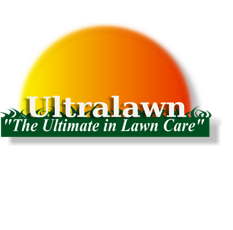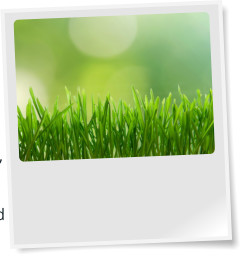

Benefits of Lawn Fertilization


Ultralawn Incorporated
1055 East 260th Street
Euclid, OH 44132
216.731.7756
440.951.3738
Office hours Monday-Friday 9-3 call today with any questions

A
well
maintained
lawn
is
not
only
a
source
of
one’s
pride,
but
can
also
provide
many
practical
benefits
to
our
environment.
An
average
sized
lawn
is
about
4,000
sq
feet
and
contains
some
3
million
grass
plants.
This
creates
an
incredibly
diverse
and
active
ecosystem
that
benefits
property
owners
and
the
public
alike.
Besides
green
grass
having
an
appealing
aesthetic
value,
we
must
recognize
its
more
important
benefits.
Here
are
just
a
few benefits that a healthy lawn provides.
•
Oxygen
Production:
A
healthy
lawn
is
an
extremely
efficient
production
system.
Grass
plants
produce
an
endless
amount
of
oxygen
while
also
removing
carbon
dioxide
from
the
air.
A
2,500
square
foot
lawn
will
release enough oxygen to meet the daily needs of a family of four.
•
Curbing
Pollution:
The
blades
and
root
zone
of
your
lawn
are
active
in
controlling
pollution
from
the
air
and
soil
respectively.
Grass
blades
capture
airborne
pollutants
while
a
lawn’s
dense
root
system
traps
pollutants as water filters through the soil.
•
Temperature
and
Noise
control:
During
the
middle
of
the
day,
hard
surfaces
such
as
roads,
driveways,
and
sidewalks,
can
be
an
average
of
20
to
30
degrees
warmer
than
adjacent lawn areas. Grass plants reduce undesirable noise levels by absorbing and deflecting sounds.
•
Erosion
Control:
A
lawn’s
dense
root
system
helps
bind
soil
particles
together
to
effectively
capture
and
absorb
water
runoff.
The
grass
plant’s
foliage
will
slow
water
speed
so
it
can
be
more
effectively
absorbed
into the soil.
•
Safe
Recreational
Surface:
Dense
turf
is
one
of
the
safest
playing
surfaces
to
avoid
injuries
from
falls.
This is the reason why most athletic fields remain natural grass.
•
Improved
Property
Value:
In
addition
to
the
aesthetic
and
environmentally
beneficial
value
of
a
healthy
green lawn, a well maintained landscape can increase a property’s value by as much as 10-15%.
Click
on
the
links
below
to
find
out
more
about
our lawn fertilization programs:
-Lawn Fertilization Programs
-Organic Lawn Fertilization Programs
Why Fertilize?
In order to maintain the quality of a lawn, a uniform supply of fertilizer nutrients,
water and air must be available to the plant’s roots. Lawn fertilizers are used to replace plant food
removed from the soil by any type of growing condition. Essential nutrients such as nitrogen, phosphorus and
potassium are required in relatively large quantities and need to be supplemented. No other management
practice does more to improve turf quality than fertilization. Lawns will survive without fertilizer; however, the
less fertilizer it receives, the more its quality regresses. It is often believed that the more fertilizers the lawn
receives the better it looks; however, over fertilization can be harmful to turf quality. Over fertilization stimulates
rapid top growth at the expense of the roots as they will become thin and
shallow unable to withstand heat and drought. Rapid top growth also promotes
disease activity as cell walls become thin within the grass plant. In addition, over
fertilization will promote thatch accumulation.
•
Nitrogen:
Affects
root
and
shoot
growth,
turf
density,
color,
disease
resistance and stress tolerance.
•
Phosphorus:
Strengthens
root
structure,
affects
rate
of
seed
development,
enhances winter hardiness and aids the plant’s ability to transfer energy.
•
Potassium:
Provides
disease
resistance,
tolerance
of
heat
stress,
and
winter injury.
•
Calcium
and
Magnesium:
These
are
important
nutrients
for
healthy
plant
function.
These
vital
nutrients
are found within our lime treatment.





















